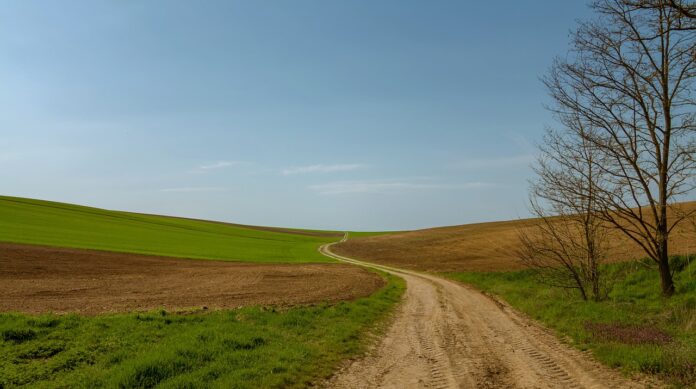Editor’s Note: Soil testing is recommended to determine the proper amount of amendments.
I remember watching a painter on television when I was a kid. He had a giant head of hair and a heartwarming smile. Sometimes, he carried a squirrel in his pocket, and with a simple brush stroke, he created beautiful pictures of nature. His paint would touch the surface of the canvas and just like that, a happy little accident turned into a tree, a mountain or an old barn in the middle of the woods.
My life isn’t full of happy little accidents, but I’m learning to see things differently. Challenges that I used to let put the brakes on my progress are now just things that I must deal with. I have faith in my creativity, but this happy little accident is perhaps the greatest moment of the year — so far.
I don’t know where it started, other than with the rain. As the snow began to melt, only to fall again in a few days, a cold front invariably came in, bringing more driving rain. The problem is that we thought we had a calf due, and we were in the pasture trying to get things ready. But the mud just got muddier. It seems that I get stuck every year. Same story, just a different spot.
Looking for a solution, I discovered that in Texas, where the soil is poor, they must treat the soil with lime and mix it to make it friable. I continued to research and found chemistry equations to detail the reagents and products of the equation. It’s called a Pozzolanic reaction.
In simple terms, lime contains calcium which separates the sodium from the soil. The sodium on the silt and clay particles hold water in a gelatinous mixture, known as mud. The soil can expand several times its dry weight and can cause the pavement to crumble if left untreated. Once the sodium is replaced with calcium, the soil quickly dries and becomes workable.
Unfortunately, I couldn’t find any information that was pertinent to my homestead on a small scale.
My options were to pay a contractor to excavate the soil, lay down geotextile fabric and compact gravel. It would cost thousands of dollars and is out of my budget. So, I began watching videos and doing more reading.
On construction sites, they hire soil engineers and conduct tests. Not only am I not a soil scientist, but I also don’t know of any at home tests to achieve the desired information. Furthermore, most books relegate access roads and pond construction for a farm to a contractor to achieve.
I got quotes and the numbers just aren’t sensible. How is a homestead supposed to save money and be productive if everything is so cost prohibitive? If I had a dry access road to the back, I could have dry ground. Perhaps I could start plowing my garden a month or so early. Without dry ground, I’m going to keep getting stuck.
So, I went to the store and bought 150 pounds of hydrated lime. I carefully spread it evenly along the desired road, leaving a wet area untouched, and I added some to the garden area that was previously underwater.
It was the first week of February 2024, and I was tilling the ground on my new access road with my Ford 860. I have inside and outside wheel weights that put my tractor at around 3 tons with the tiller, and I was able to successfully drive all over. I even managed to till up the garden without causing damage.
It’s not perfect, and I don’t know if I’ll need to reapply it. Even now in May, I’ve been able to maneuver my tractor around and scoop up manure, when surrounding areas are still too wet.













